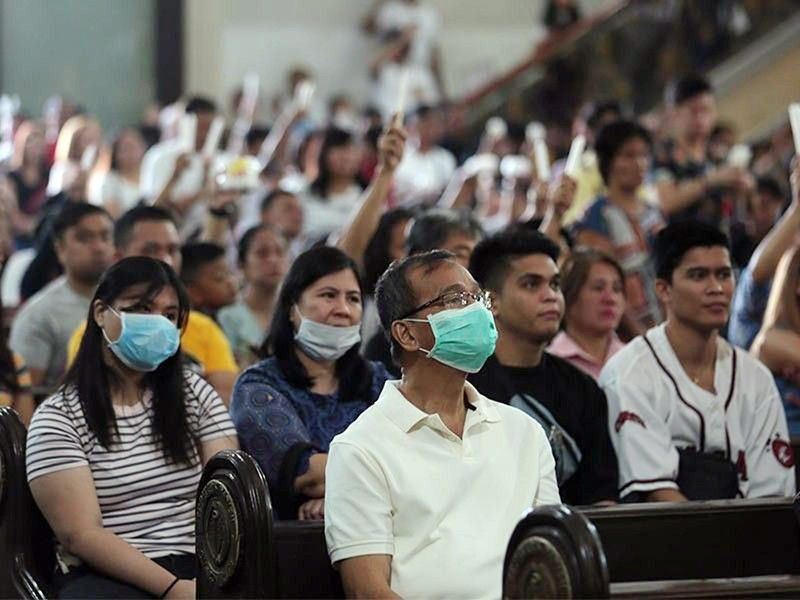Mask on, please

Is it better for the general public to wear a mask or not? That was one of the biggest street debates for weeks, and different people — whether politicians or doctors — as well as countries, have varying opinions on the matter.
Just last Thursday, Cabinet Secretary Karlo Nograles announced, “For areas placed under ECQ, the IATF (Inter-Agency Task Force for the Management of Emerging Infectious Diseases) hereby adopts the policy of mandatory wearing by all residents of face masks, ear-loop masks, indigenous, reusable or do-it-yourself masks, face shields, handkerchiefs, or such other protective equipment that can effectively lessen the transmission of COVID-19 whenever allowed to go out of their residences.”
If you look at the countries that have flattened the curve, the national strategy is a very comprehensive one that started way back in the last days of December, when word first spread about the coronavirus. It included monitoring those who had traveled to Wuhan, testing them early and placing them in quarantine. It included clear and concise public announcements on hygiene, disinfecting, hand washing, social distancing and yes, wearing masks.
What are the main points of naysayers? First, they say that in a situation where the supply of N95 and surgical masks are dwindling, the priority should be the medical staff in need of protection, since they are in contact with COVID-19 patients.
Others say that it is completely unnecessary, especially if you are observing social distancing and frequent hand washing, and that you should only wear one if you are sick. Some doctors are also of the opinion that wearing a mask might give one a false sense of immunity.
On the other hand, those who are in favor of donning masks (most establishments now have a “no mask, no entry” policy) say that wearing one is the responsible thing to do since it takes time for the symptoms to show up. You may be asymptomatic and, without a mask, you are unconsciously spreading the virus you do not know you already have.
While do-it-yourself masks (there are sew and no-sew tutorials on YouTube and Pinterest) may not effectively filter the virus from getting into your system, it will prevent droplets of your own saliva spreading when you sneeze, cough or even just talk, thus preventing you from spreading the virus in case you have it.
In a government-produced video, the Czech Republic promoted the use of masks. They said that they have controlled the outbreak by making masks compulsory since March 18. More precisely, they ordered people to wear a scarf or homemade mask to cover their mouths and noses when they are out of their homes.
In her column in the National Review, retired general surgeon Dr. Linda Halderman observed how Japan managed to slow and control the spread of the virus by wearing masks in public.
She said that the Japanese learned this generations ago from the 1918 Spanish flu pandemic that killed 500,000 Japanese, compared to 200,000 combined in the Hiroshima and Nagasaki bombings. That started a “mask culture” where healthy Japanese don cloth or paper masks in public. She further noted that a typical Japanese uses 43 masks per year.
“Initially a personal public health decision, daily mask-wearing became a social etiquette standard and then a fashion accessory. Daily public use is ubiquitous,” Dr. Halderman said.
Masks should really matter because we have already been told that COVID-19 spreads through droplets from the saliva or respiratory secretions of an infected person. These particles are released when someone infected talks, clears his throat, laughs, coughs or speaks. Research suggests that homemade masks with a double layer of cloth and a non-woven filter in between (a paper kitchen towel or a tissue, perhaps) may suffice in helping reduce transmission.
Kelly Servick, in her article in Science Magazine, echoed this sentiment when she quoted a public health expert from the University of Birmingham. KK Cheng said that wearing facemasks in public is “a perfectly good public health intervention that’s not used. It’s not to protect yourself. It’s to protect people against the droplets coming out of your respiratory tract.”
“Data from contact-tracing efforts — in which researchers monitor the health of people who recently interacted with someone confirmed to have an infection — suggest nearly half of SARS-CoV-2 transmissions occur before the infected person shows symptoms. And some seem to contract and clear the virus without ever feeling sick,” Servick warned.
This is a great time to use your scarves and bandanas. I had fun learning how to make handkerchiefs into a mask. Psychologically, I find it suffocating to wear a mask. But, just like anything, you will get used to it. I also insert a paper towel or tissue into my personal mask.
Do not forget to immediately wash your cloth mask after use (I soak it in soapy water). As experts warn, the wearing of masks in public will not work without observing the other safety measures, like proper and frequent hand-washing, social distancing and staying home as much as possible.
* * *
Post me a note at mylene@goldsgym.com.ph or mylenedayrit@gmail.com.



















